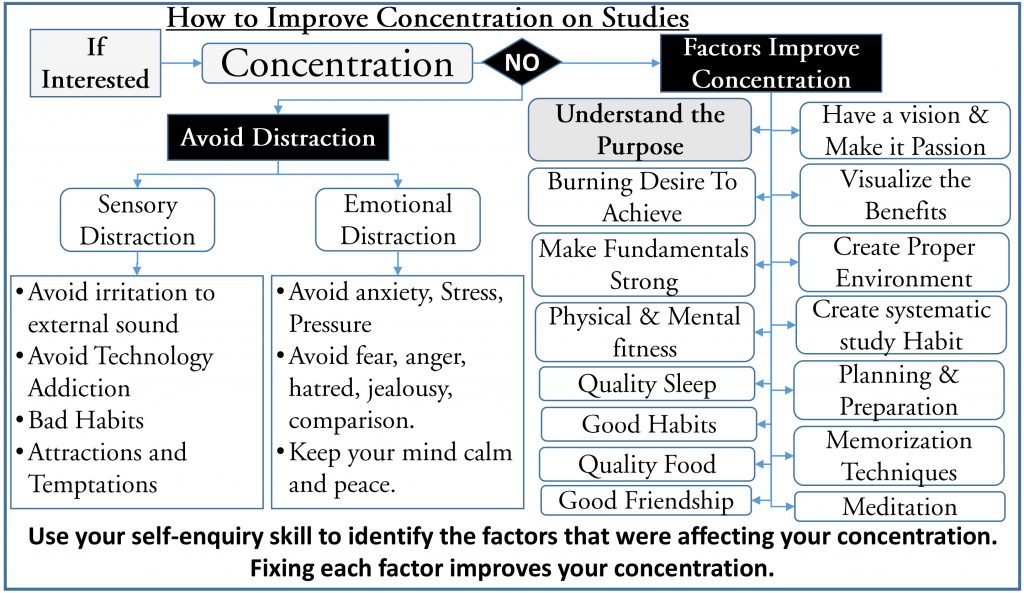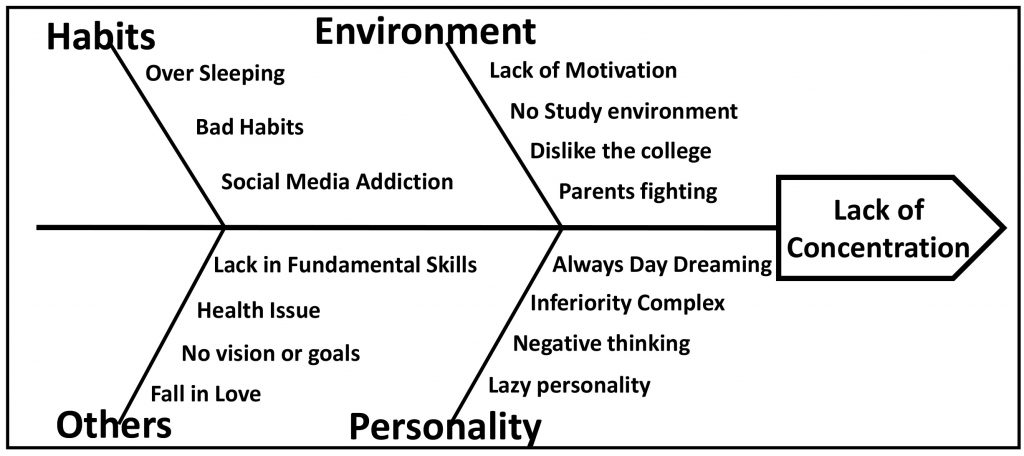 Everybody advice to concentrate, but how to concentrate? The mind possesses two distinct functions – the objective and subjective mind, the conscious and subconscious mind. Here, you would perhaps have observed two distinct entities not quite related; one is the physical existence, and the other is your thoughts. You may be consciously engaged in doing a thing but unconsciously thinking something else. Only you can witness, watch and observe your thinking.
Everybody advice to concentrate, but how to concentrate? The mind possesses two distinct functions – the objective and subjective mind, the conscious and subconscious mind. Here, you would perhaps have observed two distinct entities not quite related; one is the physical existence, and the other is your thoughts. You may be consciously engaged in doing a thing but unconsciously thinking something else. Only you can witness, watch and observe your thinking.
We all know that if we are interested and passionate about any activity, it is easy to concentrate. The bigger question is if we are not interested and fascinated, how do we make it interesting?
We all know that if we have to prepare delicious food and make it look attractive, we need to add a lot of ingredients for the taste, spices and herbs for a pleasant aroma and colour for attractiveness. Similarly, to get interested, we need to look for secret ingredients, means various factors that help to gain concentration.
OR
Think of how you able to watch a movie or your favourite game for hours together with full of concentration. Similarly, start liking your task, show interest and Pay attention. Understand the importance of the task and how it benefits you, and then concentrating is not a difficult task.
For example, how to gain interest in your studies? First and foremost, to get interested, you must understand the purpose of the study. If you study hard, you will get an outstanding grade, and if you get an outstanding grade, you can join the school or college of your choice. That will fetch you the desired job with a high salary, which in turn gives you name and fame in the society. Knowing the purpose is the motivational factor and triggering factor for becoming passionate about studies.
Use your self-enquiry skill to identify the factors that were affecting your concentration. Fixing each factor improves your concentration.

You may have the question, how to identify the factors using self-enquiry.
Until and unless you brainstorm, it is difficult to analyse the various factors that are affecting your concentration. A fishbone diagram is the cause and effect analysis tool which can be used for brainstorming. It is a visual way to look at cause and effect and is a more structured approach for root cause analysis. It helps us identify the causes of a problem, to uncover bottlenecks and to know why the existing process is not working. The problem or effect is displayed at the ‘head or mouth’ of the fish. The possible causes contributing to it are listed on the smaller ‘bones’ under various cause categories.

Thanks for reading. visit my website for latest updates www.venucv.in
